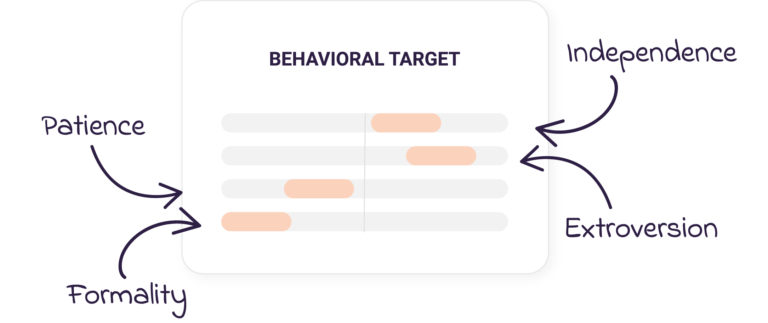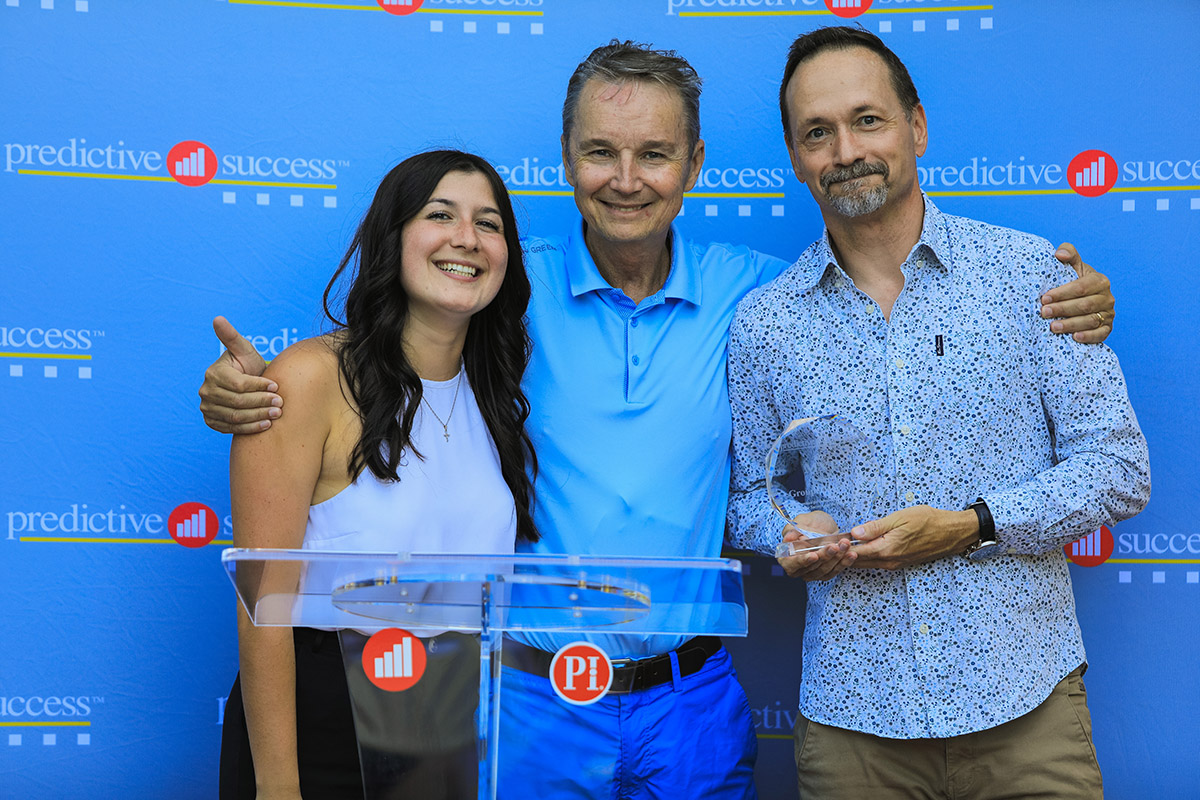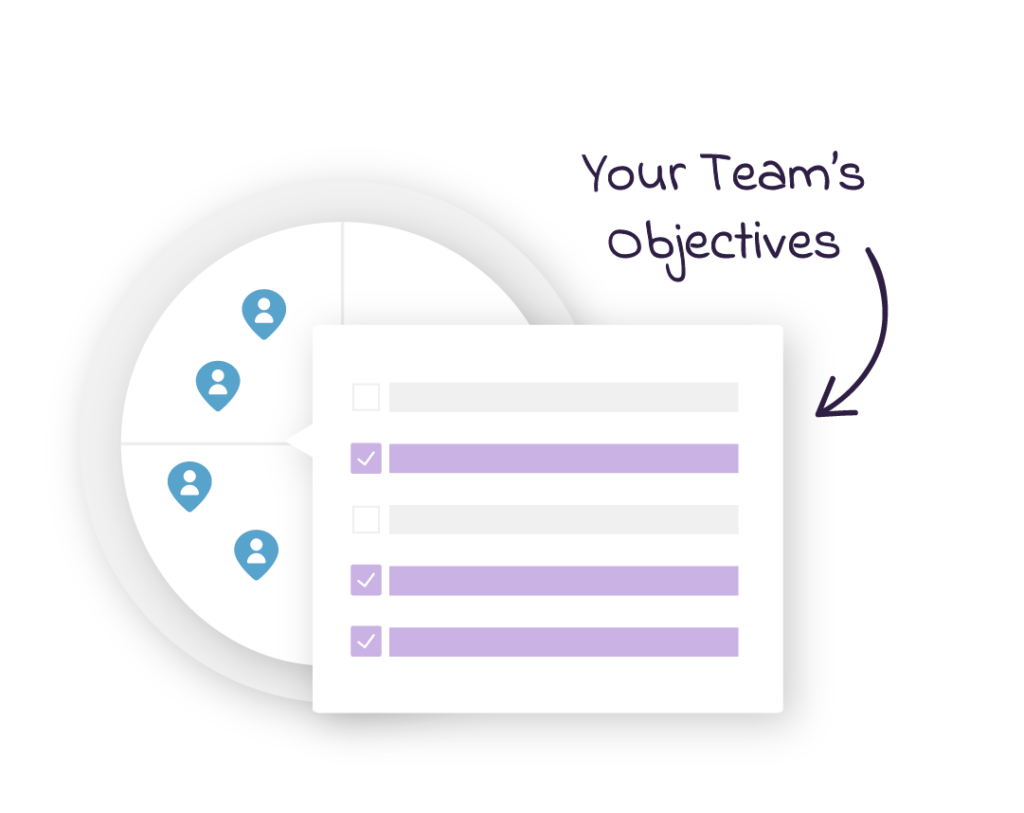Talent Acquisition Strategies That Work: A Comprehensive Guide
By PSC Admin |
13.5 min read
Talent acquisition is crucial for organizations to thrive in today’s competitive market. As a leader in talent optimization, we have helped countless clients develop and implement strategies to attract, hire, and retain top talent. Our expertise lies in leveraging data-driven insights and predictive analytics to create tailored talent acquisition solutions that align with our clients’ unique business needs and goals. In this comprehensive guide, we will share the proven strategies and best practices that have enabled our clients to build high-performing teams and drive organizational success.
Defining Your Ideal Candidate

The foundation of any successful talent acquisition strategy is a clear understanding of the ideal candidate for each role. At Predictive Success, we help our clients identify the key skills, behaviors, and cognitive abilities that are essential for success in specific positions. By using job assessments, such as the PI Job Assessment, we create detailed job profiles that outline the core competencies, personality traits, and cognitive requirements that align with the role and the organization’s culture and values.
To define your ideal candidate, start by conducting a thorough analysis of the position, including the day-to-day responsibilities, challenges, and success factors. Engage with key stakeholders, including hiring managers, team members, and top performers in similar roles, to gain insights into the skills and attributes that contribute to success. Use this information to develop a comprehensive job profile that serves as a blueprint for your talent acquisition efforts.
In addition to technical skills and experience, it is crucial to consider behavioral and cognitive fit when defining your ideal candidate. Our PI Behavioral Assessment and PI Cognitive Assessment provide invaluable insights into a candidate’s natural behavioral drives, work style, and learning agility. By incorporating these assessments into your hiring process, you can ensure that candidates not only possess the necessary skills but also align with your company’s culture and values, leading to higher job satisfaction, performance, and retention.
Building a Strong Employer Brand

In a competitive talent market, having a strong employer brand is essential for attracting top candidates. Your employer brand encompasses your company’s reputation, culture, values, and employee value proposition. It is the image that job seekers and employees have of your organization as a place to work.
To build a strong employer brand, start by clearly defining your company’s mission, values, and culture. Communicate these elements consistently across all channels, including your website, social media profiles, job descriptions, and employee communications. Showcase your company’s unique selling points, such as your commitment to innovation, work-life balance, professional development opportunities, or social responsibility initiatives.
Leverage social media and digital platforms to share authentic stories and testimonials from your employees. Encourage your team members to share their experiences, achievements, and what they love about working for your organization. These personal stories help potential candidates connect with your company on a human level and envision themselves as part of your team.
Regularly update your company’s blog and social media channels with engaging content that highlights your company culture, team events, and employee successes. Share photos and videos that provide a behind-the-scenes look at life at your organization, showcasing your workspace, team collaborations, and social activities.
At Predictive Success, we understand the power of employee advocacy in building a strong employer brand. We encourage our clients to develop employee ambassador programs, where team members are empowered to share their experiences and refer top talent to the organization. By leveraging the networks and credibility of your employees, you can expand your reach and attract highly qualified candidates who align with your company’s values and culture.
Sourcing and Attracting Top Talent

To build a robust talent pipeline, it is essential to develop a multi-channel sourcing strategy that reaches a diverse pool of qualified candidates. At Predictive Success, we help our clients identify the most effective channels for their specific industry, location, and target candidate profiles.
Start by leveraging job boards and online platforms that cater to your industry or specialized skill sets. Utilize targeted job advertisements and optimize your job descriptions to attract the right candidates. Ensure that your job postings clearly communicate the role’s requirements, responsibilities, and your company’s unique value proposition.
Social media platforms, such as LinkedIn, X (Twitter), and Facebook, are powerful tools for sourcing and engaging with potential candidates. Build a strong presence on these platforms by sharing industry insights, company updates, and job openings. Encourage your employees to share job postings and refer qualified candidates from their networks.
Implement an employee referral program that incentivizes your team members to recommend top talent. Employee referrals are often the most cost-effective and efficient way to source high-quality candidates, as referred employees tend to have a better understanding of your company culture and are more likely to be a good fit.
Attend industry events, conferences, and job fairs to network with professionals in your field and showcase your employer brand. These events provide an opportunity to connect with passive candidates who may not be actively seeking new opportunities but are open to exploring new roles.
Partner with educational institutions, professional associations, and community organizations to tap into diverse talent pools. Collaborate with these organizations to host workshops, information sessions, or internship programs that introduce students and professionals to your company and career opportunities.
At Predictive Success, we leverage our talent optimization platform to help clients identify the best-fit candidates based on their behavioral and cognitive profiles. By using our assessments and data-driven insights, you can streamline your sourcing efforts and focus on candidates who are most likely to succeed in your organization.
Optimizing the Candidate Experience

Providing an exceptional candidate experience is crucial for attracting and engaging top talent. A positive candidate experience can differentiate your organization from competitors and increase the likelihood of candidates accepting job offers and referring others to your company.
Start by creating a seamless and user-friendly application process. Ensure that your careers page and application forms are mobile-friendly, easy to navigate, and clearly communicate the steps involved in the hiring process. Use clear and concise language in your job descriptions and provide detailed information about your company culture, benefits, and growth opportunities.
Communicate regularly with candidates throughout the hiring journey. Acknowledge receipt of their applications and provide timely updates on their status. Use personalized emails or phone calls to keep candidates informed and engaged, even if they are not selected for the role.
Conduct structured and behavioral-based interviews to assess candidates’ skills, experiences, and fit with your company culture. Use a consistent set of questions and evaluation criteria to ensure a fair and objective assessment of all candidates. Provide candidates with an opportunity to ask questions and learn more about your organization during the interview process.
At Predictive Success, we recommend leveraging our behavioral and cognitive assessments to enhance the interview process. Our PI Behavioral Assessment provides insights into a candidate’s natural behavioral drives, communication style, and work preferences, allowing interviewers to tailor their questions and approach accordingly. The PI Cognitive Assessment measures a candidate’s learning agility and ability to adapt to new information, which is critical for roles that require quick thinking and problem-solving skills.
Provide candidates with timely and constructive feedback, regardless of the outcome of their application. Share specific examples of their strengths and areas for improvement, and offer guidance on how they can develop their skills for future opportunities. By providing valuable feedback, you demonstrate your commitment to candidate development and leave a positive impression, even if they are not selected for the role.
Finally, gather feedback from candidates on their experience with your hiring process. Use surveys or informal conversations to identify areas for improvement and continuously refine your candidate experience based on their insights.
Embracing Diversity, Equity, and Inclusion

Building a diverse, equitable, and inclusive workforce is not only a moral imperative but also a business necessity. Companies that prioritize DEI in their talent acquisition strategies benefit from increased innovation, creativity, and better decision-making.
To embed DEI into your talent acquisition processes, start by reviewing your job descriptions and application forms for inclusive language and potential biases. Use gender-neutral language, avoid jargon or culturally specific references, and focus on the essential skills and experiences required for the role.
Train your hiring managers and interview teams on unconscious bias and inclusive hiring practices. Provide them with the tools and resources to identify and mitigate biases in the selection process, such as using structured interview questions and objective evaluation criteria.
Partner with diverse organizations and communities to expand your reach and attract candidates from underrepresented backgrounds. Collaborate with professional associations, community groups, and diversity-focused job boards to showcase your commitment to DEI and tap into diverse talent pools.
At Predictive Success, we encourage our clients to use our assessments to support objective and unbiased hiring decisions. By focusing on candidates’ behavioral and cognitive fit for the role, rather than relying solely on resumes and subjective impressions, you can reduce the impact of unconscious biases and create a more equitable hiring process.
Regularly review your hiring data and metrics to identify any disparities or underrepresentation in your candidate pool and workforce. Use this data to inform targeted outreach and initiatives to improve diversity and inclusion in your talent acquisition efforts.
Finally, ensure that your commitment to DEI extends beyond the hiring process and is embedded in your company culture. Provide ongoing training, mentorship, and support to all employees to foster an inclusive and equitable workplace where everyone can thrive.
Leveraging Technology and Data
Technology and data play a crucial role in optimizing talent acquisition processes and making informed hiring decisions. At Predictive Success, we help our clients leverage the latest tools and platforms to streamline their hiring efforts and improve outcomes.
Applicant tracking systems (ATS) are essential for managing high volumes of applications and resumes. An ATS automates many of the manual tasks involved in the hiring process, such as posting job ads, screening resumes, and scheduling interviews. By using an ATS, you can reduce time-to-hire, improve collaboration among hiring teams, and ensure a consistent and fair evaluation of all candidates.
At Predictive Success, our talent optimization platform integrates seamlessly with leading ATS providers, allowing you to incorporate behavioral and cognitive assessments into your hiring workflow. Our PI Job Assessment helps you define the ideal behavioral and cognitive profile for each role, while our PI Behavioral and Cognitive Assessments provide insights into candidates’ natural drives, work preferences, and learning agility.
By leveraging these assessments, you can make data-driven hiring decisions that go beyond resumes and interviews. Our platform provides actionable insights and interview guides that help hiring managers ask targeted questions and evaluate candidates objectively. This approach not only improves the quality of your hires but also reduces the risk of bad hires and turnover.
In addition to assessments, our platform provides powerful analytics and reporting capabilities that allow you to measure and optimize your talent acquisition efforts. You can track key metrics such as time-to-fill, cost-per-hire, and source effectiveness, and use this data to identify areas for improvement and make informed decisions about your hiring strategies.
By combining the power of technology and data with human expertise and judgment, you can create a talent acquisition process that is efficient, effective, and aligned with your business goals.
Onboarding and Retention Strategies
Attracting top talent is only half the battle; retaining them is equally important. A strong onboarding program and retention strategies are essential for ensuring that your new hires are engaged, productive, and committed to your organization for the long term.
Start by developing a comprehensive onboarding program that goes beyond paperwork and orientation. Your onboarding program should provide new hires with a clear understanding of their roles, responsibilities, and how their work contributes to the organization’s goals. Use a mix of in-person and digital resources, such as videos, e-learning modules, and mentorship programs, to support their learning and development.
Set clear expectations and goals for new hires from the outset. Work with them to create a 30-60-90 day plan that outlines their key milestones, projects, and learning objectives. Provide regular feedback and coaching to help them succeed in their roles and feel valued by the organization.
Invest in ongoing training and development opportunities to help your employees grow their skills and advance their careers. Offer a mix of formal training programs, workshops, and on-the-job learning experiences that align with their career goals and the organization’s needs. Encourage managers to have regular career development conversations with their team members and provide support for pursuing learning opportunities.
Foster a culture of engagement and recognition by celebrating successes, providing meaningful feedback, and involving employees in decision-making processes. Use pulse surveys and employee feedback tools to regularly gather insights into employee satisfaction and engagement levels, and take action on the results.
Finally, use exit interviews and turnover data to identify patterns and root causes of attrition. Use these insights to inform your retention strategies and make data-driven improvements to your employee experience.
By combining effective onboarding, ongoing development, and a culture of engagement, you can create a workplace where top talent thrives and stays for the long haul.
Measuring Success and Continuous Improvement

To ensure the effectiveness of your talent acquisition strategies, it is essential to measure key performance indicators (KPIs) and continuously improve your processes based on data-driven insights.
Start by defining the KPIs that are most relevant to your organization’s goals and priorities. Common talent acquisition KPIs include time-to-fill, cost-per-hire, quality of hire, candidate experience ratings, and diversity metrics. Use a combination of quantitative and qualitative data sources, such as your ATS, candidate feedback surveys, and hiring manager assessments, to track and measure these KPIs.
Regularly review your hiring metrics and outcomes with your talent acquisition team and key stakeholders. Use this data to identify areas of strength and opportunities for improvement. For example, if your time-to-fill is higher than industry benchmarks, you may need to streamline your application process or expand your sourcing channels.
Gather feedback from candidates, new hires, and hiring managers to gain a holistic view of your talent acquisition process. Use this feedback to identify pain points, bottlenecks, and areas for improvement. Implement data-driven changes and monitor their impact on your KPIs and outcomes.
At Predictive Success, we work closely with our clients to help them measure and optimize their talent acquisition efforts. Our platform provides real-time analytics and reporting capabilities that allow you to track your KPIs and make informed decisions based on data. We also offer consulting services and support to help you continuously improve your processes and stay ahead of the curve in the ever-evolving world of talent acquisition.
Conclusion: Talent Acquisition Strategies That Work
In today’s competitive talent market, having a comprehensive and data-driven talent acquisition strategy is essential for attracting and retaining top talent. By defining your ideal candidate, building a strong employer brand, sourcing through multiple channels, optimizing the candidate experience, embracing DEI, leveraging technology and data, and focusing on onboarding and retention, you can create a talent acquisition process that drives business success.
At Predictive Success, we are committed to helping organizations unlock the power of their people through talent optimization. By partnering with us and leveraging our expertise and solutions, you can take your talent acquisition efforts to the next level and build a high-performing workforce that drives your business forward.
Unlock the full potential of your team with Predictive Success — Request a demo and start optimizing your talent acquisition strategies today!
Further Reading
For those looking to delve deeper into the world of talent acquisition and the latest trends, here are some informative resources:
- Talent Acquisition Trends 2024 – Korn Ferry: Explore the key skills, diversity initiatives, and methods to widen the talent pool in the upcoming year, as outlined by industry experts.
- 7 Talent Acquisition Strategies for Better Hiring in 2024 – TechTarget: This article provides a comprehensive look at strategies to enhance your hiring processes, including widening talent outreach and promoting company initiatives.
Related Blogs
The Year-End Talent Playbook: Setting Your Workforce Up for Success in 2025
Success in 2025 starts with the decisions you make today. The workforce landscape is rapidly evolving, and organizations must be proactive in aligning their talent strategies with future business goals. The year-end period offers an
Innovative Hiring Tools: Transforming Your Recruitment Process
Recruitment is no longer just about filling open positions; it’s about finding the right people whose skills and personalities align with both the demands of the role and the culture of the organization. Traditional hiring
Coaching and Development Tools Every Manager Needs
The Importance of Coaching and Development in the Workplace Coaching and development are essential to business success, improving both team performance and individual employee growth. Effective coaching drives talent optimization, aligns team goals, and creates


